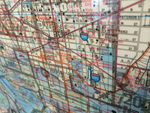Magnificently diverse, Zion and Bryce Canyon national parks contain burning deserts, lush woodlands with shimmering ponds, barren, windswept ledges of solid rock, and deep forests of pine and fir. These habitats, with their variety of terrain and climates, support a wide array of plants and animals whose diversity is primarily a result of the wide range of elevations and the differing availability of water. Zion, ranging from 3,666 to 8,726 feet above sea level, has a larger variety of plants and animals than cooler and higher Bryce Canyon, with elevations from 6,620 to 9,115 feet.
Zion & Bryce Canyon National Parks Today
While much of southern Utah is barren and sometimes drab desert, Zion and Bryce Canyon are most certainly much more. (That is, of course, why they were designated national parks in the first place.) Those with the time and inclination to explore these parks will discover hundreds of microclimates -- little worlds of their own that create unique habitats that often seem out of place in this generally arid country.
In Zion, you can see several of these microclimates along the Riverside Walk -- there's a desert swamp where you might spot a leopard frog or two, and lush, hanging gardens on the walls as you enter the Narrows. You'll also find hanging gardens at Zion's Weeping Rock, where there is a good example of spring lines, which occur when water seeping through a porous rock is diverted to the surface by a layer of much harder rock.
At Bryce Canyon, you'll discover a moist world in the aptly named Mossy Cave, which is fed by a natural spring. Walking down the Queen's Garden Trail, you'll notice that the vegetation on the north-facing slopes and in the narrow gullies -- Douglas fir and ponderosa pines -- is far different than the piñon and juniper in the sunnier areas. And there is a much cooler and wetter climate at the higher elevations in the southern section of the park -- such as along the Bristlecone Loop and Riggs Spring Loop trails.
Bryce Canyon at first seems easy to understand -- it's the hoodoos, of course -- but look a bit closer and you'll soon realize that in addition to its delightful rock formations, Bryce Canyon has serene woodlands of pine, where deer graze in open meadows, and dense forests of spruce and fir, where you'll find the world's oldest living organisms -- bristlecone pines. Of course, there are also the lowlands, below the rim. This is definitely a desert, yet anything but drab, with its colorful and whimsical hoodoos.
Zion has a more complicated environment. There are stupendous rock formations -- even a few hoodoos -- but Zion also has the unique Narrows, a canyon carved by the Virgin River, which is home to fascinating microclimates and habitats that support plants and animals not seen elsewhere in the park. These include the rare Zion snail, found nowhere else in the world. In some ways, Zion has even more diverse geographic features than Bryce Canyon -- everything from delightful little pools surrounded by delicate ferns and wildflowers to rocky, windswept ridges, where only the most determined and rugged plants and animals can survive.
The best way to explore these parks and get to know them intimately is to get away from the viewpoints and hit the trails, leaving behind the throngs, who seem to be glued to the officially designated scenic lookouts. Remember, though, that southern Utah is hot in the summer, and these parks -- particularly lower-elevation Zion and some of the trails below the rim at Bryce Canyon -- can be scorching desert, so be prepared with plenty of drinking water and sun block.
On the other hand, it is also possible to get a close-up view of nature without exerting a lot of effort. Plants and rocks are everywhere, and a variety of animals can be seen throughout both parks. To see wildlife, simply go to a quiet place -- even a park campground early in the morning -- and wait. Sit at the edge of a meadow or take a slow walk down almost any park path or trail -- the key here is to get away from people, and especially the noise they make, and to take the time to watch, wait, and listen. Nature surrounds you at both Bryce Canyon and Zion national parks, but it doesn't necessarily advertise itself; with just a bit of patience, it can be coaxed out of hiding.
Note: This information was accurate when it was published, but can change without notice. Please be sure to confirm all rates and details directly with the companies in question before planning your trip.








